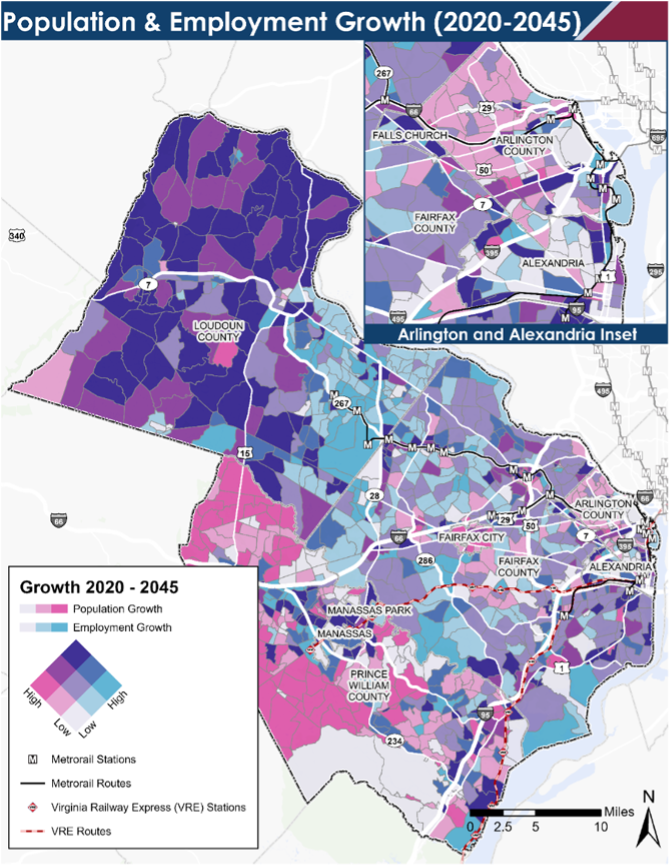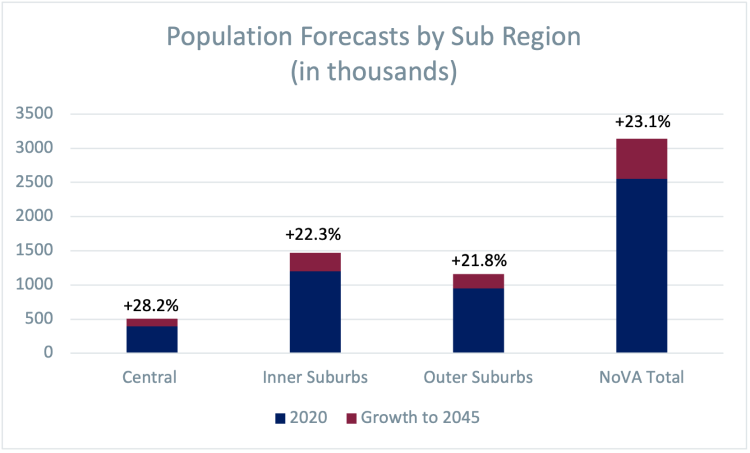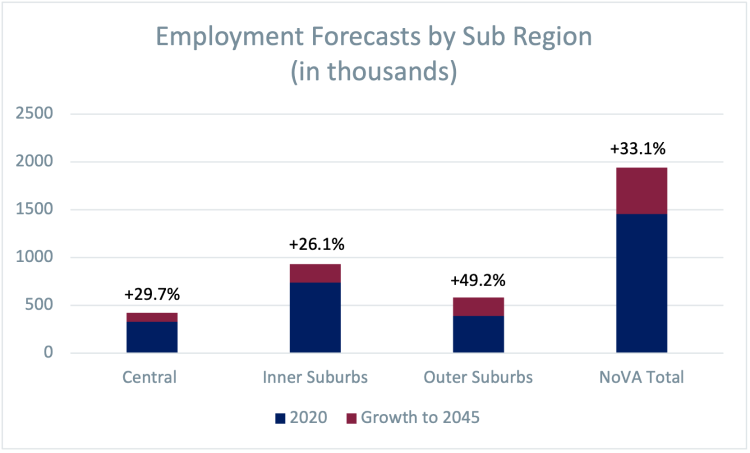Over the last decade, population growth in Northern Virginia has significantly outpaced growth in the rest of Virginia due to net immigration from across the nation, attracted by the high quality of employment opportunities. Northern Virginia grew by 14.3 percent between 2010 and 2020 to a population of 2.23 million people. By comparison, the statewide population grew 7.9 percent over the past decade. Even with population increases throughout NoVA, growth rates varied across the region. For instance, Loudoun County’s population increased by more than 35 percent, while Fairfax County’s population increased by 7 percent from 2010 to 2020.

Source: MWCOG Cooperative Land Use Forecasts Round 9.1a
As NVTA looks ahead to 2045, the TransAction plan update is relying on the latest approved long-range Cooperative Forecasts of population, employment and household growth prepared by the Metropolitan Washington Council of Governments (MWCOG). According to MWCOG, the population of Northern Virginia is projected to grow by 23 percent, from 2.55 million people today to 3.14 million people by 2045. Total employment in Northern Virginia is projected to grow by 33 percent, from 1.46 million jobs today to 1.94 million jobs by 2045. The bar charts below illustrate the expected growth for the region and by subregion.


Not all areas of Northern Virginia will grow in the same way between 2020 and 2045. Population forecasts show that the central jurisdictions (Arlington Co./Alexandria City) are expected to have the highest percentage growth, but the inner suburban jurisdictions (Fairfax County/Falls Church City/Fairfax City) are expected to have the highest increase in absolute terms. Employment forecasts show that the outer suburbs (Loudoun Co./Prince William Co.) are expected to have the highest percentage growth, but roughly the same job increase as the inner suburbs in absolute terms.
Overall, growth trends may influence travel patterns in a number of ways:
- Trip lengths could be reduced as the growth in suburban jobs may reduce the need for longer-distance commutes to Washington, DC;
- Job growth in the outer suburbs may lead to more reverse-commuting;
- Suburb-to-suburb trip-making may be impacted as changes in Northern Virginia growth, predicted to outpace Maryland, could affect cross-Potomac trips; and
- Grown trends, including increased density in population, employment centers and residential areas, could be supportive of transit where it already exists or is planned and lead commuters to shift from driving to taking transit.
Stay tuned for the next edition in this blog series, which will focus on expected changes in travel patterns and how Northern Virginians will be impacted.
